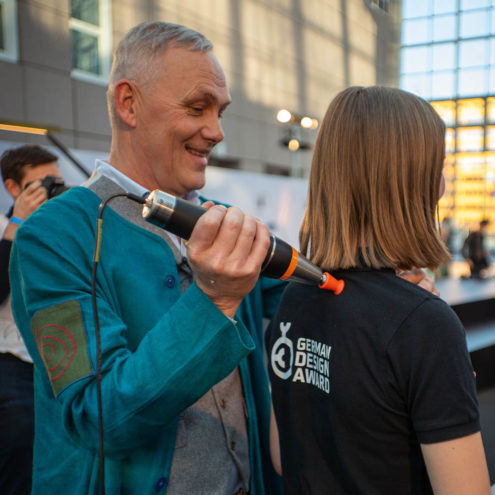Lower back exercises – Strengthen and protect your lower back

Many people experience pain or stiffness in the lumbar spine, often as a result of a sedentary lifestyle, poor posture or unbalanced exercise. Having a strong and mobile lumbar spine is crucial to avoid back problems and improve functionality in everyday life.
Studies show that exercise can be one of the most effective ways to both prevent and reduce back pain. By regularly exercising and strengthening your lumbar spine, you can improve your posture, increase your trunk stability and reduce your risk of injury. In this guide, we’ll cover why lumbar exercise is so important, basic and advanced exercises, and how Fascia Clinics can help you optimize your lumbar health.
The benefits of exercising the lumbar spine
Including low back exercises in your exercise routine can have many benefits, both for your training and your everyday mobility.
1. improved trunk stability and core strength
The lumbar spine is a central part of the body and acts as a stabilizing factor for the entire trunk. A strong lumbar spine makes it easier to maintain good posture and reduce stress on other parts of the body.
2. prevents and relieves back pain
Many back problems are caused by weak or unbalanced muscles in the trunk. By strengthening your lumbar spine, you can reduce the risk of future back problems and relieve existing pain.
3. Increased performance in other forms of exercise
Whether you are doing strength training, running or yoga, a strong lower back plays an important role. A stable trunk improves power transmission in the body and can help you perform better.
4. Reduced risk of injury and better posture
A strong and flexible lumbar spine reduces the risk of overuse injuries and contributes to better posture, which can prevent future problems in both the back and neck.
Basic exercises for the lumbar spine
Here are some effective exercises to help you strengthen and stabilize your lower back:
1. birddog
Muscles that are activated: Back, core and gluteal muscles
Implementation:
- Stand on all fours with hands under shoulders and knees under hips.
- Stretch one arm forward while stretching the opposite leg backward.
- Hold the position for a few seconds and return to the starting position.
- Repeat the movement with the other arm and leg.
2. back rubs
Muscles that are activated: Lower back and back of thighs
Implementation:
- Lie on your stomach with your hands under your forehead.
- Slowly lift your upper body off the floor while keeping your feet on the ground.
- Hold the position for a few seconds and then slowly lower back down.
3. Good Mornings
Muscles that are activated: Lumbar, glutes and hamstrings
Implementation:
- Stand with your feet hip-width apart and your back straight.
- Place your hands behind your neck and tense your torso.
- Push your hips back and slowly fold your upper body forward.
- Keep your back neutral and return to the starting position by pushing your hips forward.
4. superman
Muscles that are activated: Lumbar and core
Implementation:
- Lie on your stomach with your arms and legs stretched out.
- Raise your arms and legs slowly upwards at the same time.
- Hold the position for a few seconds before lowering back to the starting position.
Lumbar training for different goals
1. to build strength
To increase strength, you can work with heavier weights, such as deadlifts, weighted back raises and kettlebell swings.
2. to improve endurance
If you want to increase your endurance, you can train with lighter weights and more repetitions. Exercises such as static back raises and planks are good options.
Common mistakes in low back training
Wrong technique – Can lead to overload and pain.
Too heavy weights – Can impair technique and increase the risk of injury.
Insufficient warm-up – Can make your back feel stiff and restricted.
Mobility and stretching for the lumbar spine
Stretching is important to keep the lumbar spine supple and prevent stiffness. Here are two effective stretching exercises:
Knee-to-chest stretch: Lie on your back and pull one knee towards your chest. Hold for 20 seconds and switch legs.
Cat-camel exercise: Stand on all fours and alternate between rounding and arching your back to soften your lower back.
Injury prevention exercises for the lumbar spine
To protect your back, it’s important to strengthen the stabilizing muscles in your torso. Good exercises include:
Plank: Strengthens core and spine stability.
Side plank: Improves core strength and stabilizes the lumbar spine.
Tips for a sustainable low back exercise routine
Exercise regularly – 2-3 times a week is optimal.
Vary the exercises – Combine strength, stability and mobility.
Listen to your body – Adjust your training if you feel pain or discomfort.
How Fascia Clinics can help you strengthen and protect your lower back
At Fasciaklinikerna we work to optimize lumbar spine function and prevent pain. Through fascia treatment and individualized exercises we can:
Improve mobility in the lumbar spine by releasing tension.
Reduce stiffness and pain by optimizing fascia and muscles.
Create an individualized training plan to strengthen the lumbar spine in the right way.
Do you have lumbar spine problems or want to prevent future problems? Visit fasciaklinikerna.se fasciaklinikerna.se and book a consultation today!
 Search
Search
































